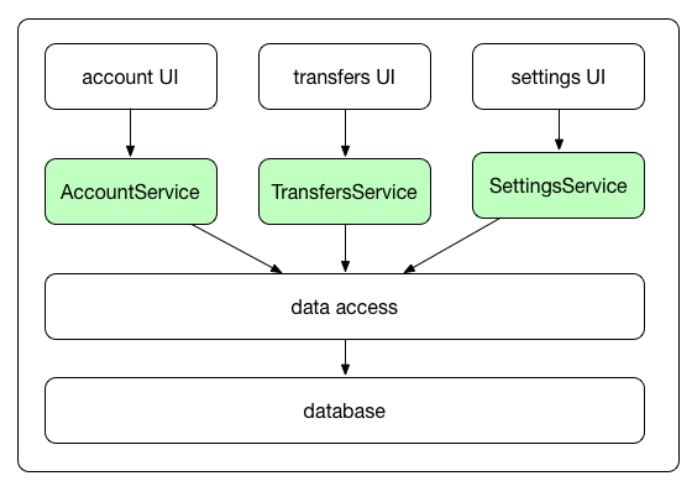We begin the comparison by starting with the description of the monolithic architecture to present its characteristics.
Monolithic versus microservices
The monolithic architecture
In the past, we used to create applications as complete, massive, and uniform pieces of code. Let's take a web MVC application for example. A simplified architecture of such an application is presented in the following diagram:

As you can see, the diagram presents the typical web application, a fragment of a banking system in this case. It's the Model View Controller (MVC) application, consisting of models, views, and controllers to serve up HTML content back to the client's browser. It could probably also accept and send the JSON...



